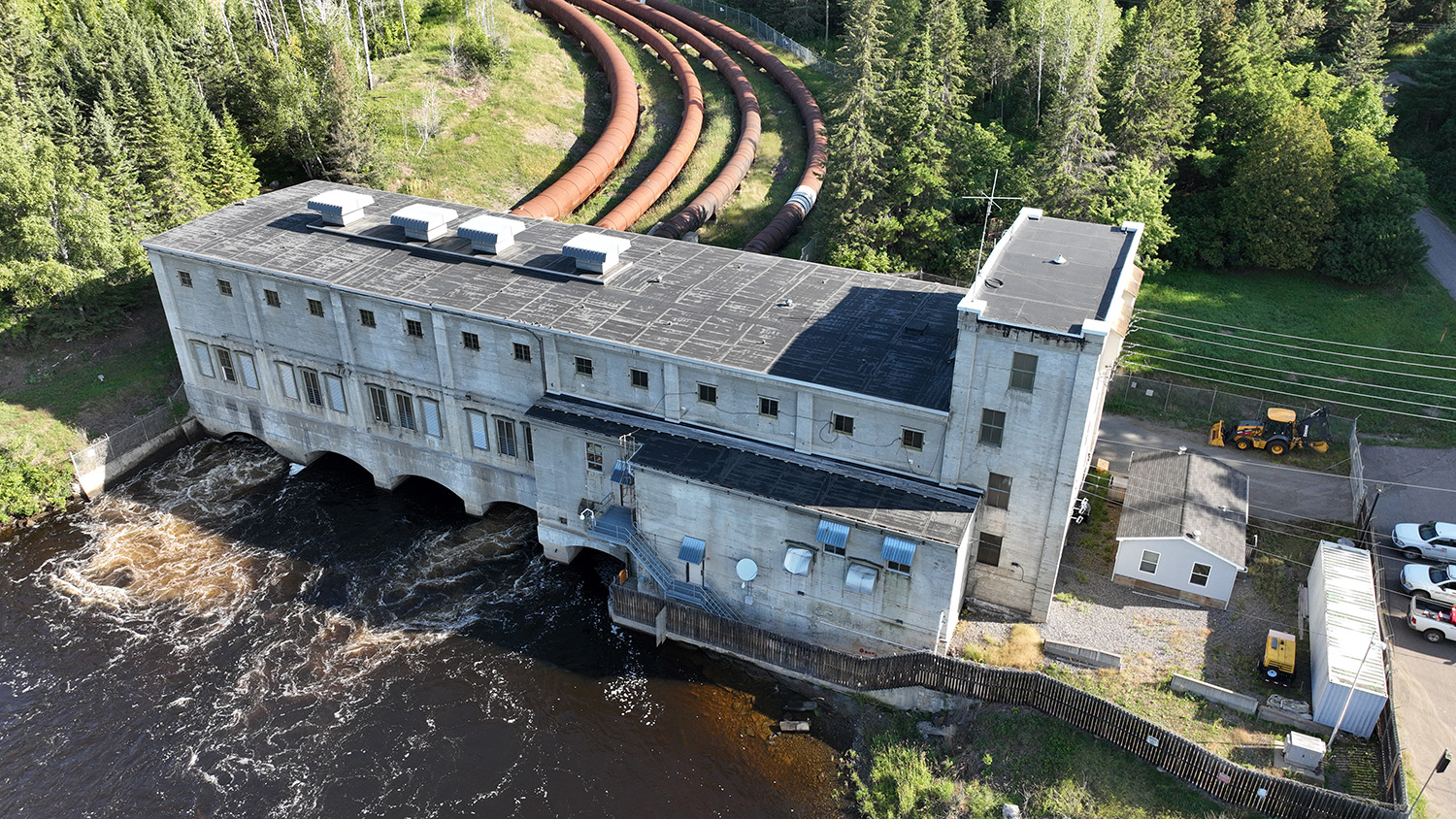
FAQ
In 2020, as part of the Initiation Phase Optimization Study, existing conditions and dam safety issues were reviewed and documented as part of a station-wide condition assessment. The study determined that the Kakabeka GS will reach end of life in the next five years.
Following the study, OPG began assessing three options for life extension of the Kakabeka GS. A summary of the alternatives assessed included:
- Overhaul – reusing as much of the existing infrastructure as possible and performing only required improvements where needed
- Refurbishment – using the same powerhouse and replacing the existing T/G units, while also replacing or upgrading other equipment
- Redevelopment – building a new powerhouse and replacing the existing T/G units, while also replacing or upgrading other equipment
Redevelopment was selected as the preferred alternative.
OPG intends to fully adhere to the existing Kaministiquia River Water Management Plan (WMP) requirements, including no alterations to water level or flows in accordance with the WMP. OPG also intends to require the Constructor to adhere to the Best Management Practices Guide for the Mitigation of Impacts of Waterpower Facility Construction (OWA, 2012). Any fisheries effects can be mitigated or offset using best management practices, observing timing windows and implementing any additional mitigation or offset measures agreed upon during the Fisheries Act permitting process. Any potential effects on the terrestrial environment will also be minor and can be mitigated. Moreover, any effects on the terrestrial environment would be restricted to OPG’s land tenure and will not occur on general crown land or other off-site properties, other than minor temporary nuisance effects such as increased construction traffic.
In its current state, the life expectancy of Kakabeka GS is just around the corner. The station has been in operation for 117 years and to ensure the station continues generating reliable electricity for another 90 years, while also improving public safety and using available water flows more efficiently, the redevelopment of the station is required. The Project is likely to have only minor and temporary negative environmental effects, which will be restricted to the area immediately around the GS. OPG will create a mitigation plan that will ensure we are accountable and effects are managed according to regulatory requirements and best practices.
Redevelopment involves building a new powerhouse and replacing the existing turbine generator units and other equipment such as the surge tank, penstocks, and other balance of plant systems. To maintain the heritage value of the Kakabeka GS, OPG selected a redevelopment approch that kept the external structure of the powerhouse in its original location while adding a new powerhouse “extension” located immediately upstream of the existing powerhouse to house two new Francis type turbines and a powerhouse crane. The existing powerhouse will be used for ancillary equipment and systems, control room, and staff amenities including washrooms and lunchrooms.
In addition to powerhouse redevelopment, the project will include replacement of the surge tank due to its poor condition and to eliminate the existing outflow public safety issue with either a new surge tank with a surge discharge weir and adjoining concrete overflow reservoir and stilling basin with mechanical dissipators; or a new surge tank which uses mechanical bi-pass valves to relieve pressure in the penstocks.
No, the existing powerhouse will be retained. There will be an extension added to the backside of the existing powerhouse that will house the new turbines.
